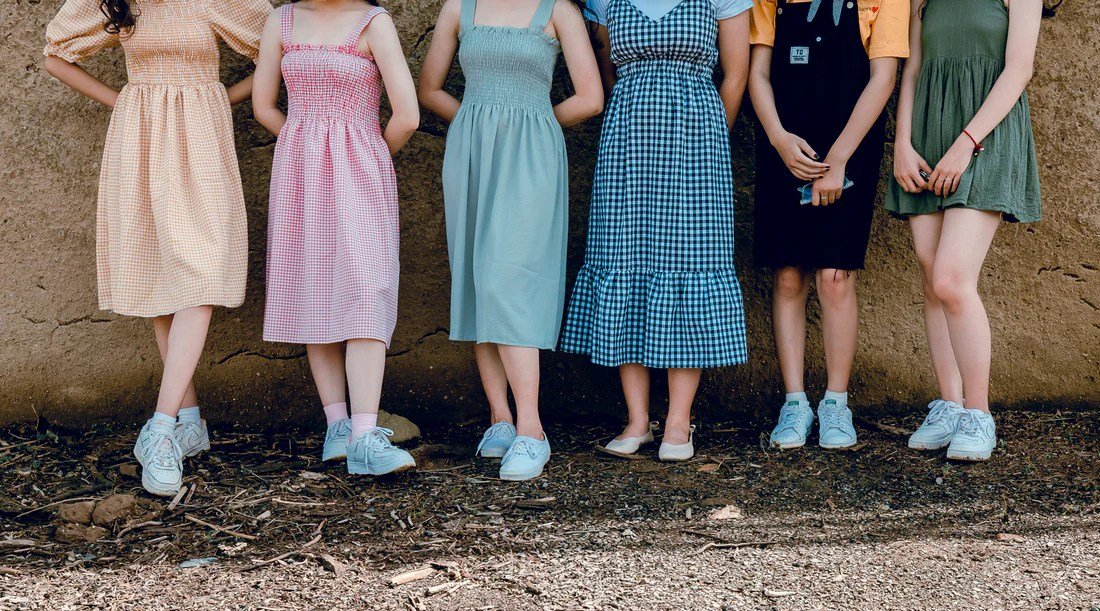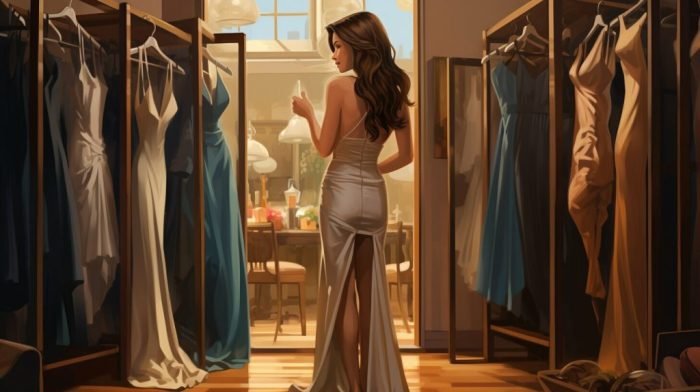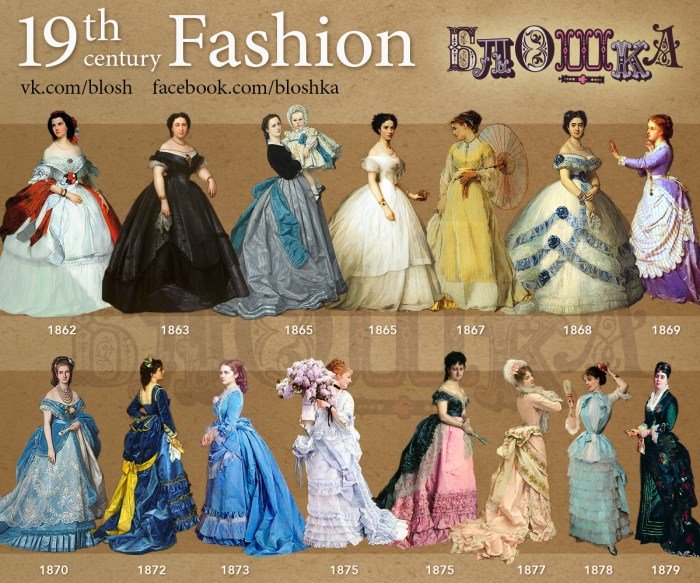Why women wear dresses history – Embark on a captivating journey through the annals of fashion with “Why Women Wear Dresses: A Historical Journey.” From the dawn of civilization to the present day, dresses have played a pivotal role in shaping women’s identities, reflecting cultural norms, and serving as a canvas for personal expression.
Throughout history, dresses have evolved in tandem with societal changes, reflecting the interplay of culture, fashion, and practicality. From the flowing robes of ancient Egypt to the elaborate gowns of Victorian England, each era has left its unique mark on the evolution of women’s dress.
Historical Evolution of Women’s Dresses

Women’s dresses have undergone a remarkable evolution over centuries, influenced by cultural, societal, and technological changes. From simple garments to elaborate masterpieces, dresses have served as both functional attire and expressions of personal style.
Ancient Civilizations
In ancient civilizations, such as Egypt and Mesopotamia, women wore dresses made from natural fibers like linen and wool. These garments were often loose-fitting and draped, providing comfort and coverage in warm climates. Notable examples include the Egyptian kalasiris, a straight-cut linen dress, and the Mesopotamian kaunakes, a draped woolen garment.
Medieval Era
During the Middle Ages, women’s dresses became more structured and elaborate. In Europe, the gown emerged as a dominant form, featuring long, flowing skirts and fitted bodices. These dresses were often adorned with embroidery, lace, and other embellishments, reflecting the wealth and status of the wearer.
Throughout history, women have donned dresses for myriad reasons, from practicality to cultural significance. In contemporary fashion, the palkhi fashion long dresses exemplify this rich tradition. These elegant gowns, characterized by their flowing silhouettes and intricate embellishments, embody the timeless allure of feminine attire, reflecting the diverse cultural heritage that has shaped women’s fashion.
Renaissance and Baroque Periods
The Renaissance and Baroque periods saw a proliferation of dress styles. The Renaissance gown evolved into a more fitted silhouette, with puffed sleeves and low necklines. The Baroque era introduced even more extravagance, with dresses featuring voluminous skirts, elaborate lacework, and ornate trimmings.
18th and 19th Centuries
The 18th century witnessed the rise of the Rococo style, characterized by delicate fabrics, pastel colors, and intricate detailing. The 19th century brought about the Romantic era, where dresses became more flowing and ethereal, often featuring puffed sleeves, lace trim, and ruffles.
Women have worn dresses throughout history for various reasons, including modesty, practicality, and aesthetics. Dresses have evolved from simple tunics to elaborate gowns, reflecting cultural and societal norms. Today, women continue to wear dresses for formal occasions such as weddings.
For example, love is blind bridesmaid dresses are a popular choice for bridesmaids, as they offer a wide range of styles and colors to complement the bride’s gown. The wearing of dresses continues to be a significant part of women’s fashion, showcasing both their individuality and the evolution of societal customs.
20th Century
The 20th century saw a dramatic transformation in women’s fashion. The early 20th century embraced the flapper style, with short, loose-fitting dresses that reflected the newfound freedom of women. Later in the century, the rise of ready-to-wear fashion made dresses more accessible to a wider audience.
Cultural Influences on Dress

Women’s dress choices are profoundly influenced by cultural norms, traditions, and beliefs. Across societies, social and religious factors have shaped distinct dress codes for women, reflecting the values and expectations of their respective cultures.
Social Norms
Social norms play a significant role in determining what is considered appropriate attire for women in a given society. These norms may vary widely, influenced by factors such as social class, age, and occupation. In some cultures, women are expected to dress modestly, covering their bodies to a greater extent.
In others, women may have more freedom to express themselves through their clothing, with less emphasis on covering up.
Historically, women have worn dresses for both practical and aesthetic reasons. Today, dresses continue to be a popular choice for women of all ages, from casual thierry colson dresses to formal gowns. The versatility of dresses makes them a wardrobe staple for many women, allowing them to express their personal style and adapt to different occasions.
Religious Beliefs
Religious beliefs also exert a strong influence on women’s dress. In many religions, specific dress codes are prescribed for women, often reflecting religious values and beliefs about modesty and purity. For example, in some Muslim-majority societies, women are expected to wear the hijab or other forms of head covering.
In some Christian denominations, women may be expected to dress modestly, avoiding revealing clothing.
Symbolism and Representation
Women’s dresses have carried significant symbolic meanings throughout history, transcending their functional purpose. The choice of color, fabric, and design elements has been intricately woven into cultural and social contexts, conveying messages about the wearer’s status, identity, and cultural affiliations.
The color of a dress has often held symbolic significance. White, for instance, has been associated with purity and innocence, often seen in bridal gowns and traditional clothing. Black, on the other hand, has conveyed elegance, power, and even mourning in different cultures.
Women have worn dresses throughout history for various reasons, including modesty and practicality. Today, modest dresses for teens are a popular choice for young women who want to dress modestly without sacrificing style. Modest dresses for teens come in a variety of styles and fabrics, making them perfect for any occasion.
From casual sundresses to formal gowns, there is a modest dress for every teen. And because they are typically made from high-quality materials, modest dresses for teens are both durable and comfortable.
Fabric and Design
The fabric used in a dress can also convey symbolic meanings. Silk, for example, has been associated with luxury and opulence, while linen and cotton have represented simplicity and modesty. The design elements, such as embroidery, lace, and beading, have further enhanced the symbolic value of dresses, often reflecting cultural traditions and regional identities.
Social Status and Identity
Dresses have played a crucial role in conveying social status and identity. In many cultures, elaborate and ornate dresses were reserved for the elite, while simpler garments were worn by lower classes. The style and design of a dress could indicate a woman’s marital status, profession, or social standing.
Cultural Messages
Dresses have also been used to convey cultural messages. In some societies, certain colors or patterns were associated with specific religious beliefs or ethnic groups. Traditional dresses, such as the kimono in Japan or the sari in India, embody cultural heritage and continue to hold deep symbolic significance.
Fashion and Style: Why Women Wear Dresses History
Fashion and personal style play a significant role in women’s dress choices. Designers, trends, and personal preferences heavily influence how women dress, creating a dynamic and ever-evolving landscape of fashion.
Fashion designers are at the forefront of creating new trends and styles, often pushing the boundaries of creativity and innovation. They draw inspiration from various sources, including art, history, and culture, to create unique and captivating designs that resonate with the fashion-conscious public.
Designers and Trends, Why women wear dresses history
- Designers such as Coco Chanel, Christian Dior, and Yves Saint Laurent have left an indelible mark on fashion history, shaping the way women dress.
- Fashion trends emerge from runways, fashion magazines, and social media, influencing the choices of women worldwide.
- Trends often reflect broader cultural and societal shifts, such as the rise of feminism and the increasing emphasis on individuality.
Personal Preferences
- Personal preferences play a crucial role in shaping women’s dress choices.
- Factors such as body type, lifestyle, and personal taste influence the way women select and style their clothing.
- Women often use clothing as a form of self-expression, conveying their personality and values through their wardrobe.
Practical Considerations

When selecting dresses, women often prioritize comfort, functionality, and suitability for various occasions. These practical considerations influence dress choices significantly.
Factors like climate play a crucial role. In warm climates, women opt for lightweight, breathable fabrics like cotton or linen, while in colder climates, they prefer heavier fabrics like wool or velvet for insulation.
Lifestyle and Body Type
Lifestyle also influences dress choices. For example, women with active lifestyles may choose dresses that allow for ease of movement, while those in formal settings may opt for more structured and elegant dresses.
Body type is another factor that affects dress selection. Dresses can accentuate or conceal certain body features, and women often choose dresses that flatter their body shape.
Social and Economic Factors

Social and economic conditions profoundly impact women’s dress choices. Poverty, inequality, and access to resources shape the availability, affordability, and cultural norms surrounding women’s attire.
Poverty
In impoverished communities, women often face limited access to resources, including clothing. They may rely on donations, secondhand stores, or inexpensive fabrics to create garments. Economic constraints can also restrict women’s ability to purchase fashionable or stylish clothing, leading to a more utilitarian approach to dress.
Inequality
Social and economic inequality can create disparities in dress between different groups of women. Women from higher socioeconomic backgrounds may have access to a wider range of clothing options and can afford to follow fashion trends. Conversely, women from lower socioeconomic backgrounds may have limited access to clothing and may prioritize practicality over style.
Access to Resources
Access to resources, such as education, employment, and healthcare, can influence women’s dress choices. Women with higher levels of education and employment opportunities may have greater financial resources and the ability to purchase more expensive or fashionable clothing. Access to healthcare can also affect dress choices, as women may need to wear specific garments for medical reasons.
Dress as a Form of Expression

Dresses have evolved into more than just garments; they have become powerful tools for women to express themselves and assert their identities. Through the choice of fabric, color, design, and style, women use dresses to convey their creativity, individuality, and social messages.
Beyond personal expression, dresses have become symbols of empowerment and social activism. Women have used them to challenge societal norms, raise awareness about important issues, and advocate for change.
Personal Identity and Creativity
Dresses offer women a canvas to showcase their unique personalities and artistic flair. The colors they choose reflect their moods and preferences, while the designs and patterns they select reveal their creativity and style. Through their dresses, women can create a visual representation of who they are, both internally and externally.
Social Activism and Empowerment
Dresses have become powerful tools for social activism. Women have used them to raise awareness about issues such as gender equality, body positivity, and environmental sustainability. By wearing dresses that carry specific messages or symbols, women can participate in public discourse and advocate for their beliefs.
Dress and Identity

Dress plays a crucial role in shaping women’s sense of identity, influencing perceptions of femininity, gender roles, and social expectations.
Dresses can express personal style, reflect cultural values, and convey messages about social status. They can empower women, boost confidence, and contribute to a positive body image. Conversely, societal norms and expectations can limit dress choices, influencing how women perceive themselves and how others perceive them.
Gender and Social Roles
Dresses are often associated with femininity and traditional gender roles. In many cultures, dresses are expected attire for women on formal occasions, reinforcing the notion of “appropriate” dress for different genders.
However, dresses can also challenge gender norms. Women who wear pantsuits or other traditionally masculine clothing may be seen as defying expectations and breaking down stereotypes.
Cultural Influences
Cultural factors heavily influence dress choices. In some cultures, women are expected to cover their bodies, while in others, revealing clothing is more acceptable. Traditional dresses often reflect the cultural heritage and values of a particular region.
For example, the sari in India is a symbol of cultural identity and modesty, while the kimono in Japan represents elegance and tradition.
Self-Expression
Dresses can be a powerful tool for self-expression. Women can use dresses to communicate their personality, mood, and values. Through color, pattern, and style, dresses can convey a wide range of emotions and messages.
For instance, a woman wearing a bright, flowing dress may be seen as cheerful and confident, while a woman wearing a more conservative dress may be perceived as professional and serious.
Final Conclusion
In conclusion, the history of women’s dresses is a rich tapestry woven from threads of culture, fashion, and personal expression. Dresses have empowered women, symbolized their social status, and reflected their aspirations. As we continue to navigate the ever-changing landscape of fashion, the enduring allure of dresses remains a testament to their timeless appeal.
FAQ Resource
Why did women start wearing dresses?
Dresses originated as simple garments for protection and modesty. As societies evolved, they became more elaborate, reflecting cultural norms and social status.
What is the significance of color in women’s dresses?
Color has played a symbolic role in dresses throughout history. White represents purity and innocence, red symbolizes passion and love, and black conveys elegance and sophistication.
How has fashion influenced the evolution of women’s dresses?
Fashion designers have played a major role in shaping the silhouette and style of women’s dresses. From the cinched waists of the Victorian era to the flowing hemlines of the 1920s, fashion trends have left an indelible mark on dress history.